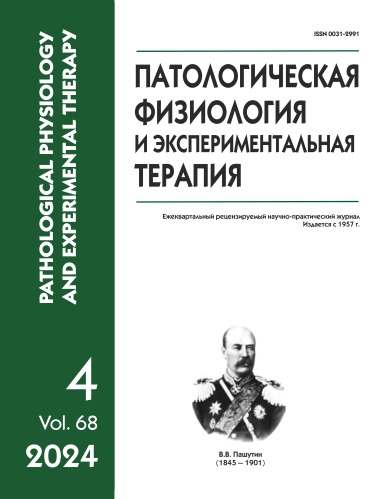Modern concepts of the pathogenesis of rheumatoid arthritis.
DOI:
https://doi.org/10.25557/0031-2991.2024.04.59-70Keywords:
rheumatoid arthritis, pathogenetic features, autoimmune inflammation, role of hypoxiaAbstract
The review focuses on modern ideas about the pathophysiology of rheumatoid arthritis (RA). The main steps of the autoimmune process are addressed with a consideration of the role of the common epitope in the human leukocyte antigen system as well as the importance of post-translational modification of a number of proteins, primarily citrullination, and also carbamylation and acetylation, in the formation of autoantibodies. The role of antigen-presenting cells, including macrophages, B-lymphocytes, and dendritic cells, in this process is highlighted. The authors discussed the importance of innate and adaptive immune cells, especially B and T cells, changes in their proliferation and differentiation, and the imbalance of helper CD4+T (Th) cells in RA. Also, the focus of this review is the contribution of pro-inflammatory cytokines and chemokines to the development of the inflammatory reaction of the synovial membrane of affected joints. The importance of several transcription factors involved in the intracellular signal transduction and providing the dynamics of autoimmune inflammation is emphasized. It was shown that recruited and resident synovial fibroblasts are significant for the development of proliferative inflammation with the formation of pannus and subsequent effects on the cartilage and bone tissue. The authors described the mechanisms for destruction of these tissues and the role of activated chondrocytes, osteoclasts and intracellular biochemical cascades in maintaining this pathological process. Particular emphasis is placed on the development of local hypoxia as one of the most important factors in the RA pathogenesis. The causes of hypoxia are given along with the special role of the HIF-1α transcription factor and its connection with other participants in the RA pathological process, such as NF-κB, JAK/STAT, PI3K-AKT, and Notch. The energy imbalance under hypoxic conditions induces mitochondrial dysfunction, which is important in the pathogenesis of RA. This will be discussed in the second part of the review.Downloads
Published
2024-12-30
Issue
Section
Reviews
How to Cite
[1]
2024. Modern concepts of the pathogenesis of rheumatoid arthritis . Patologicheskaya Fiziologiya i Eksperimental’naya Terapiya (Pathological physiology and experimental therapy). 68, 4 (Dec. 2024), 59–70. DOI:https://doi.org/10.25557/0031-2991.2024.04.59-70.






